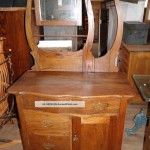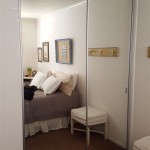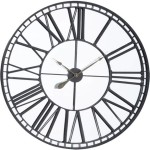How to Use Mirror Therapy for Stroke
Mirror therapy is a rehabilitation technique that utilizes a mirror to create a reflective illusion of movement in a paralyzed or weakened limb. This visual feedback can trick the brain into believing the affected limb is moving normally, promoting neural plasticity and aiding in functional recovery after a stroke. While research continues to explore the full potential and mechanisms of mirror therapy, it has shown promise in improving motor function, reducing pain, and increasing range of motion.
The basic principle behind mirror therapy involves placing a mirror in the midsagittal plane, effectively hiding the affected limb from view. The patient then performs movements with the unaffected limb while observing its reflection in the mirror. This creates the illusion that the affected limb is mirroring the movements of the healthy limb. The brain, receiving visual input suggesting movement in the impaired limb, can facilitate the reorganization of neural pathways and promote recovery.
Setting up for mirror therapy is relatively straightforward. A simple, full-length mirror is ideal. The mirror should be positioned on a stable surface, such as a table or countertop. The patient sits comfortably facing the mirror, ensuring the affected limb is hidden behind the mirror while the unaffected limb is visible in the reflection. The positioning is crucial; the reflection of the moving limb should create the illusion of the affected limb moving normally.
Before beginning mirror therapy exercises, it is essential to consult with a qualified physical or occupational therapist. A therapist can assess the individual's specific needs and develop a personalized exercise program. They can also provide guidance on correct posture, movement execution, and appropriate duration and frequency of practice. This professional guidance helps ensure safe and effective implementation of mirror therapy.
A typical mirror therapy session might begin with simple exercises, such as opening and closing the hand, wrist flexion and extension, or finger movements. As the patient progresses, more complex movements involving the elbow and shoulder can be incorporated. The focus should remain on smooth, controlled movements of the unaffected limb while concentrating on the visual illusion of the affected limb mirroring the action. The therapist may provide specific instructions tailored to the patient's individual needs and goals.
The duration and frequency of mirror therapy sessions can vary depending on individual circumstances and the therapist's recommendations. Generally, sessions lasting 15 to 30 minutes, performed several times a day, are recommended. Consistency is key to maximizing the potential benefits of mirror therapy. Regular practice helps reinforce the neural connections and facilitates the brain's reorganization process.
While mirror therapy is generally considered safe, certain precautions should be observed. Patients should avoid pushing themselves too hard, especially in the initial stages. Pain should be avoided, and any discomfort should be communicated to the therapist immediately. The therapist can adjust the exercises or modify the program as needed to ensure the patient's comfort and safety.
Mirror therapy is not suitable for all stroke patients. Individuals with severe cognitive impairments or significant visual deficits may not be appropriate candidates. Additionally, patients experiencing neglect, a condition where they are unaware of one side of their body, may also not benefit from mirror therapy. A thorough assessment by a healthcare professional is crucial in determining suitability.
The benefits of mirror therapy extend beyond motor improvements. Some studies suggest mirror therapy can also help reduce phantom limb pain, a common complication after stroke where patients experience pain in the affected limb even though it is no longer functional. The visual feedback provided by mirror therapy can help re-establish the brain's representation of the limb, potentially alleviating phantom sensations.
In addition to its potential in reducing phantom limb pain, mirror therapy may also contribute to improvements in sensory function. Studies have explored the possibility that the visual illusion of movement can stimulate sensory pathways in the brain, leading to increased sensation and awareness in the affected limb. This can further enhance functional recovery and improve overall quality of life.
Integrating mirror therapy into a comprehensive rehabilitation program can provide a valuable tool in stroke recovery. Used in conjunction with other therapies, such as physical therapy, occupational therapy, and speech therapy, mirror therapy can contribute to a multi-faceted approach that addresses the various challenges faced by stroke survivors. This integrated approach can maximize the chances of regaining lost function and improving overall well-being.
Research on mirror therapy is ongoing, and further studies are needed to fully understand its mechanisms and long-term effects. However, the current evidence suggests that mirror therapy can offer a safe, affordable, and accessible intervention for individuals recovering from stroke. Its potential to improve motor function, reduce pain, and enhance sensory awareness makes it a promising addition to the rehabilitation toolkit.

Mirror Therapy For Stroke Patients How To Improve Mobility

Mirror Therapy For Stroke Rehabilitation A Viable Treatment Option Myotspot Com

The Effect Of Mirror Therapy On Functional Recovery Upper Extr

Mirror Therapy For Stroke Hemiplegia And Phantom Limb Pain Homeceuconnection

Saebo Mirror Box Therapy Arm And Hand Function

Stroke Exercises Using Mirror Therapy And Neurons

Mirror Therapy Exercises For Stroke Recovery

What Is Mirror Box Therapy Transitions Physiotherapy

Focusing On Visual Perception To Improve Motor Performance After Stroke Moss Rehabilitation Research Institute Mrri

Frontiers Alternative Motor Task Based Pattern Training With A Digital Mirror Therapy System Enhances Sensorimotor Signal Rhythms Post Stroke








